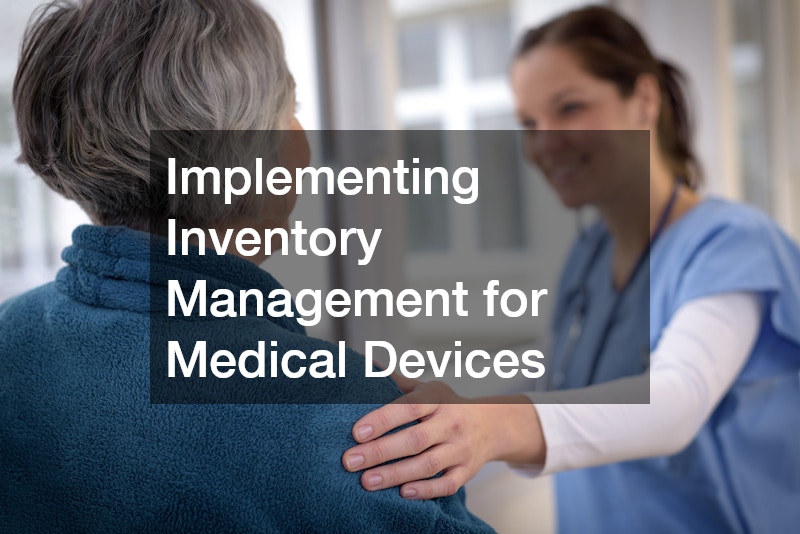As the healthcare industry advances, medical device inventory management software makes inventory efficiently becomes crucial for ensuring quality patient care, minimizing costs, and complying with stringent regulatory standards. In an environment where technology continuously evolves, healthcare providers must adapt their approaches to inventory management to maintain the highest standards of patient safety and operational efficiency.
Inventory management in the medical device sector involves the precise control of supply chain variables, optimizing stock levels, and ensuring the availability of critical devices where and when they’re needed. With the stakes as high as they are in healthcare, accurate inventory control can directly impact patient outcomes and healthcare facility efficiency.
By strategically assessing and implementing improvements in inventory practices, healthcare providers can realize substantial impacts on cost reduction and patient care quality.
What are the Best Practices for Implementing Inventory Management Systems?
To implement an effective medical device inventory management software system is, defining clear protocols and processes is fundamental. Healthcare organizations should start by accurately forecasting demand, as incorrect predictions can lead to either overstocking or stockouts, both of which have significant implications. Advanced forecasting techniques, such as predictive analytics, can be crucial for anticipating future inventory needs based on historical data and market trends. Furthermore, establishing minimum and maximum stock levels helps in maintaining adequate stock without overburdening storage capabilities. This balance ensures that medical professionals have access to necessary devices while controlling overhead costs associated with excess inventory.
Another best practice involves the utilization of automated inventory management systems. These systems can track medical device inventories in real-time, providing healthcare providers with instant insights into stock levels, usage rates, and order statuses. Automation reduces manual errors, enhances efficiency, and allows staff to focus on patient care rather than administrative tasks. In addition, standardized labeling and barcoding of medical devices facilitate smooth tracking and monitoring throughout the supply chain, improving traceability and accountability. The integration of RFID technology is also gaining traction, offering enhanced tracking capabilities and reducing human error.
How Do Regulatory Compliance Standards Affect Inventory Management?
Regulatory compliance is a significant concern in medical device inventory management software is due to the critical nature of the products involved. Healthcare organizations must adhere to strict regulations from agencies such as the FDA, which govern the storage, handling, and documentation of medical devices. Non-compliance can result in severe penalties, product recalls, and compromised patient safety. As such, implementing a compliant inventory management system is not just a legal necessity but a fundamental component of quality control. Ensuring compliance involves thorough documentation of inventory processes, regular reporting, and adherence to traceability requirements.
These industry regulations mandate that healthcare providers maintain accurate records of device movement and handling from acquisition through to final use or disposal. Comprehensive inventory records are essential for tracking the lifecycle of each device, thus allowing facilities to initiate timely recalls and alerts if defects arise. In addition, regulatory compliance often requires stringent environmental controls, such as temperature and humidity monitoring, particularly for sensitive or high-value medical devices. Inventory systems must therefore be capable of supporting these requirements to maintain regulation-compliance effectively.
What Challenges are Faced in Medical Device Inventory Management?
Despite advancements in technology, several challenges persist in medical device inventory management. One of the main hurdles is the high cost of implementation and updates to sophisticated inventory systems. Smaller healthcare facilities, in particular, may struggle to allocate sufficient funds to adopt advanced technologies, hindering their inventory management efficiency. Additionally, the rapid pace of medical device innovation and varied device lifecycles add layers of complexity to inventory management processes. Staying current with new device versions and ensuring all stock is up-to-date can be a constant challenge requiring diligent oversight.
An additional challenge involves data integrity and accurate inventory tracking. Manual entry errors, inconsistent reporting, and uncoordinated information sharing between departments can lead to discrepancies in inventory records. Ensuring the accuracy and reliability of data is critical for informed decision-making and maintaining stock at optimal levels. Moreover, the sheer volume and diversity of medical devices within healthcare institutions necessitate robust data management frameworks that can handle varying categories and exponentially growing datasets. Employing effective data analytics becomes indispensable in identifying patterns and streamlining inventory practices.

Effective inventory management for medical devices is critical for maintaining healthcare quality and operational efficiency. By understanding best practices, remaining compliant with regulatory standards, overcoming challenges, utilizing data analytics, and embracing technological innovations, healthcare organizations can optimize inventory management systems to meet industry demands and improve patient outcomes. Continuous improvement and adaptation in this field will be necessary to keep pace with advancements in healthcare and technology.
Healthcare providers must remain diligent in evaluating and enhancing their inventory systems, ensuring that they are not only effective but also compliant with evolving regulations. As part of this ongoing refinement, the integration of advanced technologies such as AI and IoT presents opportunities for more refined inventory processes. These innovations help in minimizing human error and increasing system efficiency, thereby optimizing resource usage and reducing costs.

